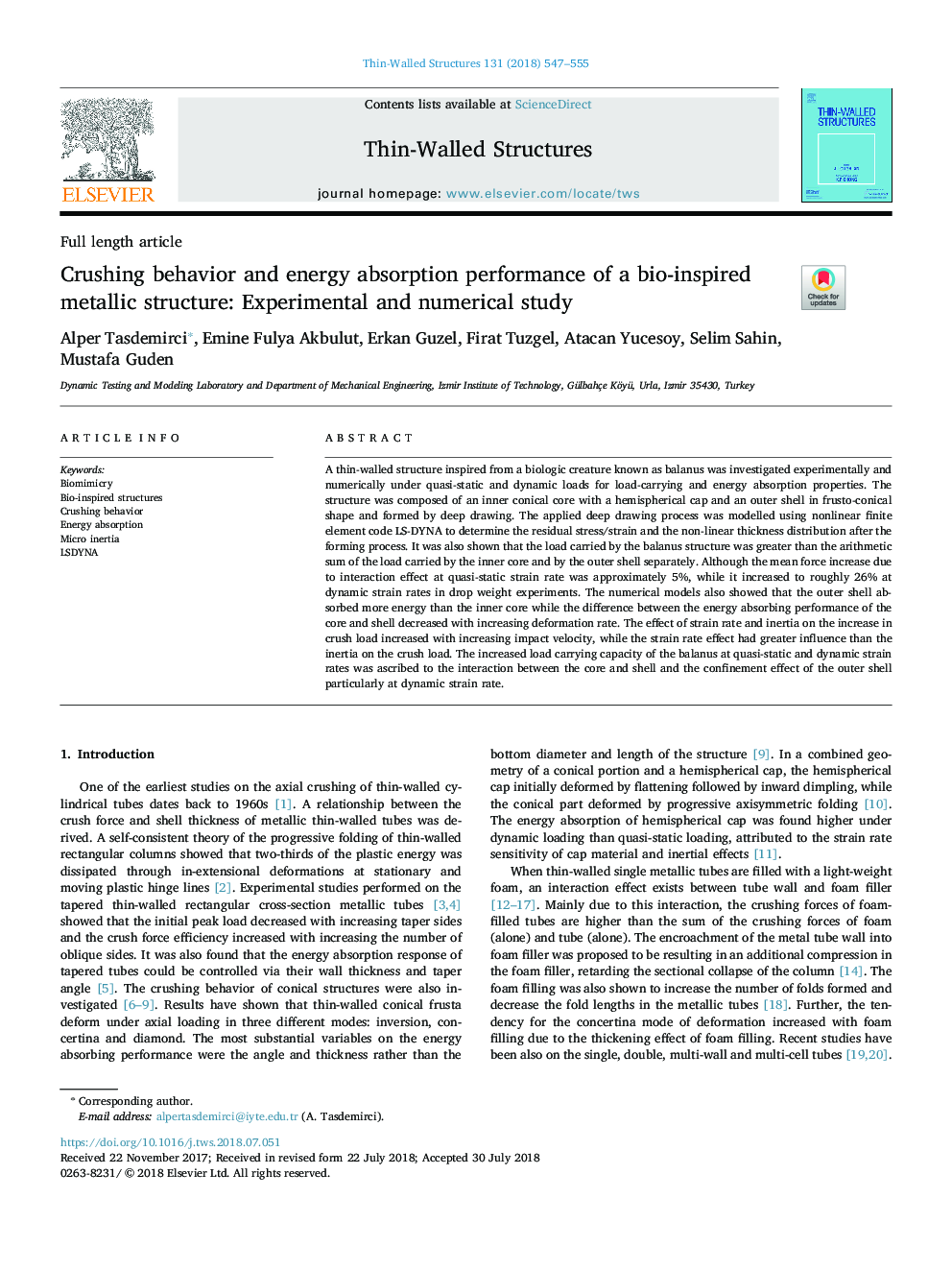| Article ID | Journal | Published Year | Pages | File Type |
|---|---|---|---|---|
| 11001312 | Thin-Walled Structures | 2018 | 9 Pages |
Abstract
A thin-walled structure inspired from a biologic creature known as balanus was investigated experimentally and numerically under quasi-static and dynamic loads for load-carrying and energy absorption properties. The structure was composed of an inner conical core with a hemispherical cap and an outer shell in frusto-conical shape and formed by deep drawing. The applied deep drawing process was modelled using nonlinear finite element code LS-DYNA to determine the residual stress/strain and the non-linear thickness distribution after the forming process. It was also shown that the load carried by the balanus structure was greater than the arithmetic sum of the load carried by the inner core and by the outer shell separately. Although the mean force increase due to interaction effect at quasi-static strain rate was approximately 5%, while it increased to roughly 26% at dynamic strain rates in drop weight experiments. The numerical models also showed that the outer shell absorbed more energy than the inner core while the difference between the energy absorbing performance of the core and shell decreased with increasing deformation rate. The effect of strain rate and inertia on the increase in crush load increased with increasing impact velocity, while the strain rate effect had greater influence than the inertia on the crush load. The increased load carrying capacity of the balanus at quasi-static and dynamic strain rates was ascribed to the interaction between the core and shell and the confinement effect of the outer shell particularly at dynamic strain rate.
Related Topics
Physical Sciences and Engineering
Engineering
Civil and Structural Engineering
Authors
Alper Tasdemirci, Emine Fulya Akbulut, Erkan Guzel, Firat Tuzgel, Atacan Yucesoy, Selim Sahin, Mustafa Guden,
